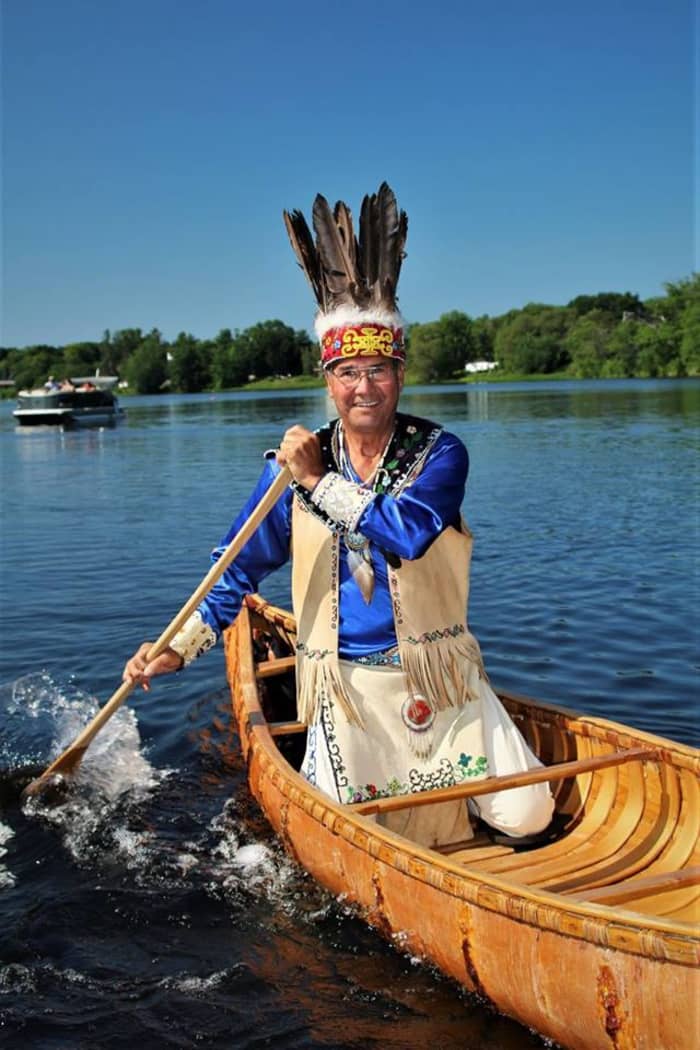Butch Phillips, an 82-year-old member of the Penobscot Nation, etches 18-inch long moose call horns from birch bark he harvests off tribal land. While some moose calls he gives away to local hunters, others have sold at auction for as much as $ 3,200 and some sit in museums.
“It’s very exciting calling a moose. You can hear them coming. Snuffing and grunting,” said Phillips, who hunts a moose each year on tribal land, the largest being 940 pounds. He also sometimes calls moose just to watch them and study them.
Based in Milford, Maine, Phillips has been making the moose calls, which are hornlike devices used to attract moose when hunting, for about 30 years with a wooden-handled knife his late wife bought him. He has more orders than he can keep up with, due in part to some local media coverage and word-of-mouth. He hopes to pass down his skills to his grown sons.
Phillips retired 31 years ago from telecommunications jobs with NYMEX and AT&T T, +1.42%, and he’s been filling his time with his etching talents ever since.
“I just can’t imagine being retired with nothing to do. I think I’d go crazy,” Phillips said.
Plus, in the winter, etching gives him something productive to do to pass time.
“There’s not a lot you can do outdoors. It gives me something to do rather than just sitting around. Can you imagine doing that for 31 years?” Phillips said.
Phillips used to make moose calls by peeling a piece of bark off a tree and using it for the day and tossing it aside. Then he started tying spruce roots around the bark to help keep the shape and use it again and again. Hunters started asking for his moose calls and his work spread by word-of-mouth.

Phillips in a 14-foot birch bark canoe that he built.
Credit: Butch Phillips
“Some hunters will use a roadside cone to call a moose. I wanted to do it the traditional way. A large majority of native hunters use a birch bark call,” Phillips said.
He uses a variety of tools, but the knife given to him by his late wife is his most treasured tool.
“The blade’s pretty much worn down. But I treasure it. It’s very special,” Phillips said.
As he became more adept at making moose calls, Phillips started making more permanent models, refining the workmanship and using thicker bark that was suitable for etching.
“I decided to do etching like they did in the old days. Everything they used to make, they carved. My artwork evolved. I try to keep the older designs alive. I’ve taken symbols like the Wabanaki symbol and incorporated them into the art to keep them alive. I use plants and trees as fillers,” Phillips said.
“In most of my art work, I try to combine people, plants and animals. We always memorialize our ancestors. And plants and animals are what we owe gratitude to for keeping us alive,” Phillips said. “In our prayers, we always give thanks to ancestors, plants and animals. There’s a theme.”
Phillips said he writes up explanations of the symbols so each buyer knows what the designs mean. Diamond shapes, for example, represent wigwams, he said. More often these days his buyers are collectors rather than moose hunters.
Phillips is an expert in his materials.
“All bark is not created equal. There’s curly bark, thick, thin, white, dark, gray. I use bark that is thick and pliable and doesn’t separate into layers,” Phillips said.
With winter bark, it’s brown with a thick rind on the inside. He has to take it off the tree carefully and scrape away the rind to make designs. He can approach the etching in two ways – either scraping away the entire background and leaving just a thin image, or carve images onto rind. Summer bark has no rind and is just yellow.
His museum-quality pieces have used winter bark with an elaborate scraping process that leaves thin details for designs. Those are the toughest to do, he said.
Phillips approaches each moose call with an open mind and has no preconceived idea of what the designs will be. The bark just speaks to him.
“I never plan on paper what it’s going to look like. Most of the time I have no idea until it evolves,” Phillips said.
In the center of the device, he often puts an image of a moose or a moose head. For special orders, he might be asked to incorporate an image of a hawk or favorite dog or even a woodpecker, in one case. He adds touches like a flower, acorns or moose tracks to fill in blank areas.
“Each side is balanced because nature is balanced,” Phillips said. “Every design is unique.”
